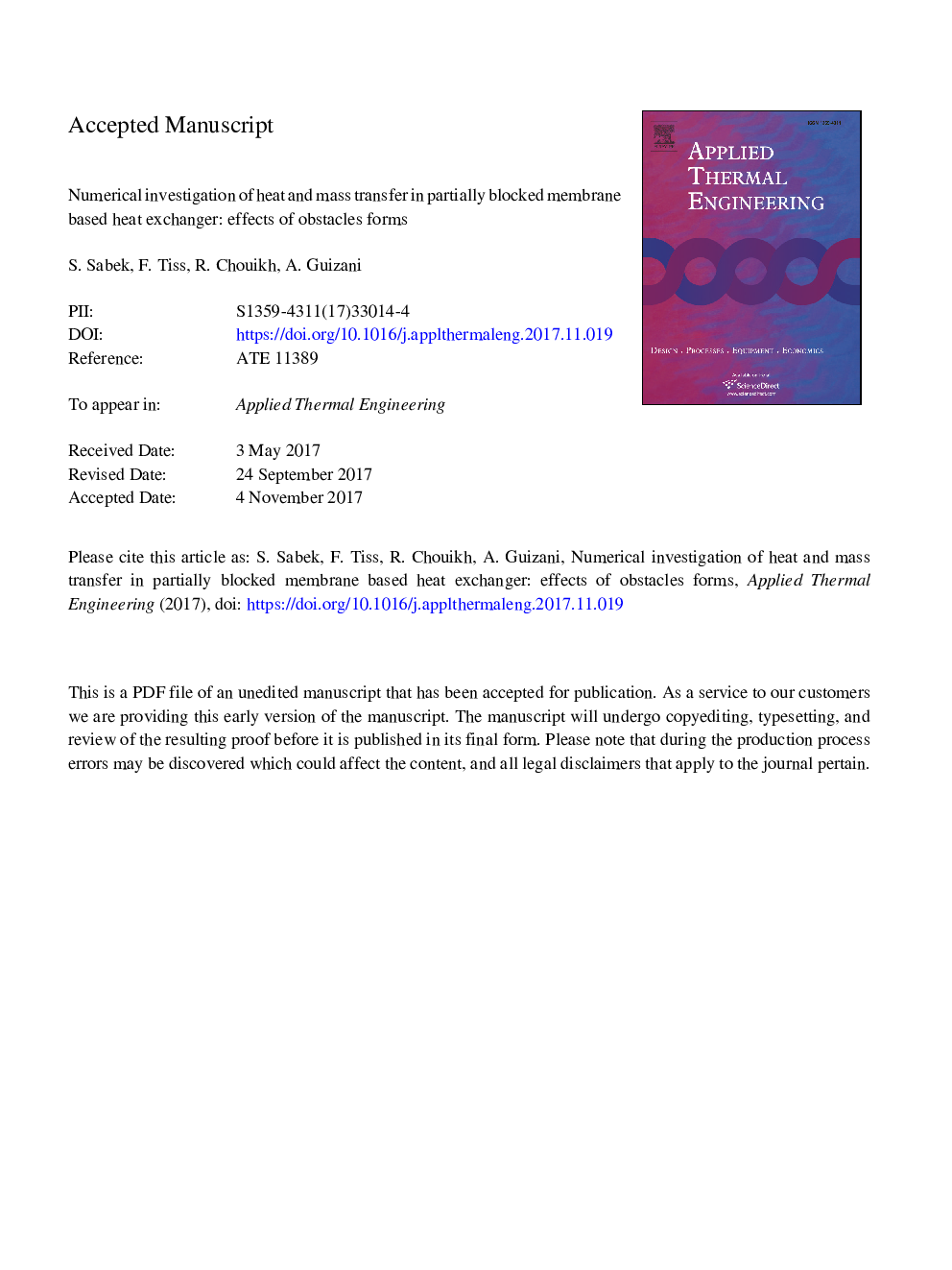| Article ID | Journal | Published Year | Pages | File Type |
|---|---|---|---|---|
| 7046354 | Applied Thermal Engineering | 2018 | 29 Pages |
Abstract
The membrane based heat exchangers are a promising technology in air conditioning and energy recovery domains, in which they recover both sensible heat and moisture. In this paper, a comparison between different forms of obstacles (rectangular, triangular and circular), inserted in the geometry of the proposed membrane based heat exchanger, is presented. In order to evaluate their impacts on the heat and mass transfer distributions, a numerical model including the momentum, heat and mass transport equations is solved. The impacts of height channels ratio (RH) on heat and mass transfer rates are also mentioned. The results show that the benefit of circular obstacles form is more important than that of other ones. In addition, a high height channels ratio (RH) leads to a large air temperature and humidity ratio values in the outlet fresh channel. Also, the three dimensional model of the membrane based heat exchanger hasn't any effect on the air temperature and humidity distributions in the co-current and counter current flow arrangements.
Keywords
Related Topics
Physical Sciences and Engineering
Chemical Engineering
Fluid Flow and Transfer Processes
Authors
S. Sabek, F. Tiss, R. Chouikh, A. Guizani,
